Roof Replacement Cost & Consumer Guide
Having a roof over your head has many meanings in everyday parlance, but every homeowner wants to know that their roof is secure, watertight, and insulating. Each different type of roof naturally has a different lifespan, meaning it can be difficult to know exactly when you should be thinking about replacing your roof.
Ensuring your roof is secure, watertight, and insulating is essential. But beyond function, renewing and replacing your old roof can help to spruce up the overall aesthetic of your home, adding sustained value.
Naturally, roof replacements sound expensive, meaning the first thing you will want to know is how much roof replacements cost. (Related: Costs of a Roof Installation and Replacement In 2021) This guide will equip you with the knowledge needed to get your roof replacement project underway.
How Much Does It Cost to Replace a Roof?
Having a roof over your head has many meanings in everyday parlance, but every homeowner wants to know that their roof is secure, watertight, and insulating. Each different type of roof naturally has a different lifespan, meaning it can be difficult to know exactly when you should be thinking about replacing your roof. As a rule of thumb, shingled roofs should last over 25 years, while tiled roofs are known for lasting much longer.
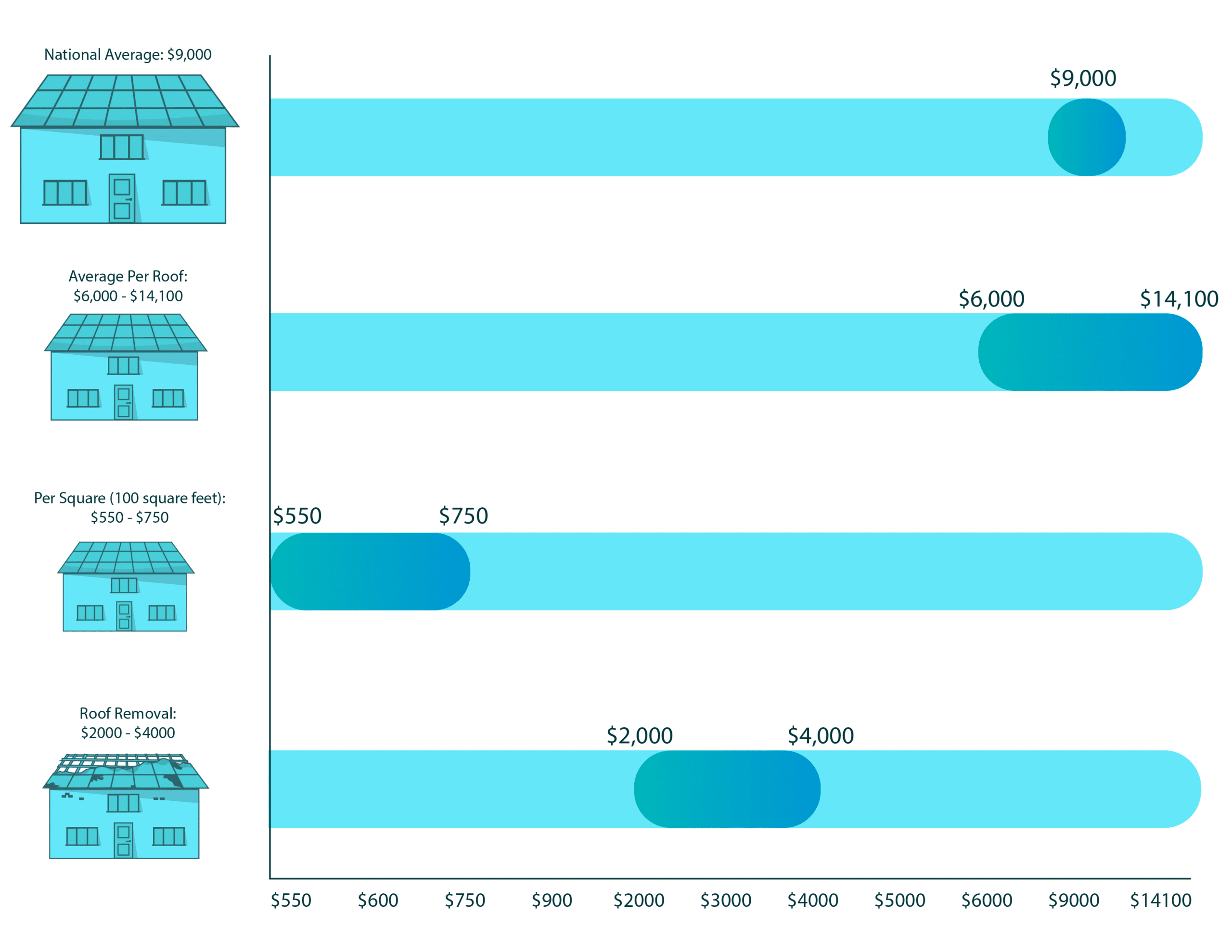
But at the first sign of a leak, deterioration, or structural defect, you should most certainly investigate whether a roof replacement is necessary. This can involve safely investigating yourself, provided you have the knowhow, or hiring a trained roof assessor to give you professional piece of mind. Such assessors will often charge around $200-$300. If you need to replace your roof, it is important to get onto it quickly to prevent the possibility of future damage. Replacing a roof is a multifaceted task. This is because many buildings, especially older ones, can often have underlying issues which only show once the roof has been stripped back.
Thus, defining the exact cost for your roof replacement can be hard to assess from the get-go without the advice of a professional assessor, as mentioned earlier. That said, being equipped with the knowledge of roofing options, the overall process and the various factors which affect cost will prepare you to make an educated best guess about the options in front of you. And, better still, which of those options will give you the best value for money. That is exactly what we’ll find out in this guide.
Types of Roofing and Associated Costs
The major defining factor of replacing a roof of course comes from the materials themselves. Depending on your material and design choices, the cost of roofing materials ranges from $360 to $2,185 per square. Before you freak out, it’s worth highlighting that roofing will be calculated in Squares, which equate to approximately 10x10 square feet. Thus, one roofing “square” equals 100 square feet.
To cover one square, you will need approximately three bundles of shingles, provided each shingle is the standard size of approximately 12 inches by 36 inches. With those technicalities out of the way let’s jump into the key types of roofing you’ll be looking at when replacing your home roof. While covering the key costs and characteristics of each. It is worth noting, the prices quoted below do not include roof removal or labor costs. Most solution are also available in varying thickness, style, and color to suit your needs.
Shingles are the top roofing material solution found across the US, and much of the world. While shingles are usually thought of as being made of asphalt, there are plenty of options available for you from concrete to clay and even wood or metal. With recent innovation also presents the option of solar-powered roof tiles. Each, of course, comes with a different price tag.
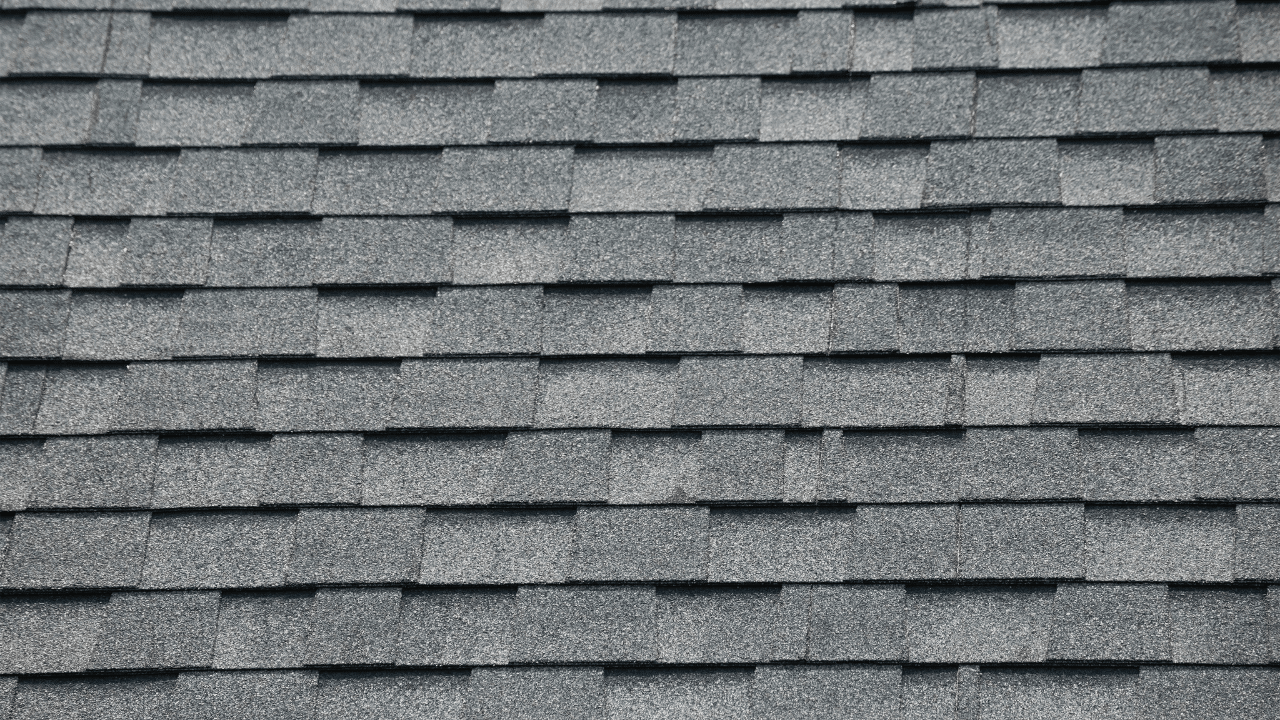
One of the most common roofing styles, asphalt shingle roofing is likely to set you back between $8,000 and $12,000 for a 2,000 square foot home. That places them between $350 and $600 per square. Asphalt is one of the most cost-effective solutions available to you, with total build costs (including roof removal) averaging around $8,400 for a 1,500 square foot home.
Life expectancy | Durability | Average Cost Per Square |
|---|---|---|
12 – 25 years, manufacturer warranty commonly lasts 10 years. | Medium-Low, with harsh weather conditions causing asphalt to deteriorate far quicker. | $475 |
Summary: Asphalt shingles provide all the features you need from a functioning roof: weather resistance and fire resistance at low cost and low maintenance. They also are available in a multitude of sizes, colors, and designs to suit different design preferences. However, its short lifespan will put off many.
Another incredibly popular and aesthetically pleasing option is using roof tiles. More expensive, at around $1,800 - $2,100 per square for average tiles, tile roofing does come at a slight premium. That also is not since tile roofing needs significant support, given its weight, which can result in required structural upgrades costing around $1,300 needed to support the tiles. Tiles also come in a variety of types, so let us cover the three most common.
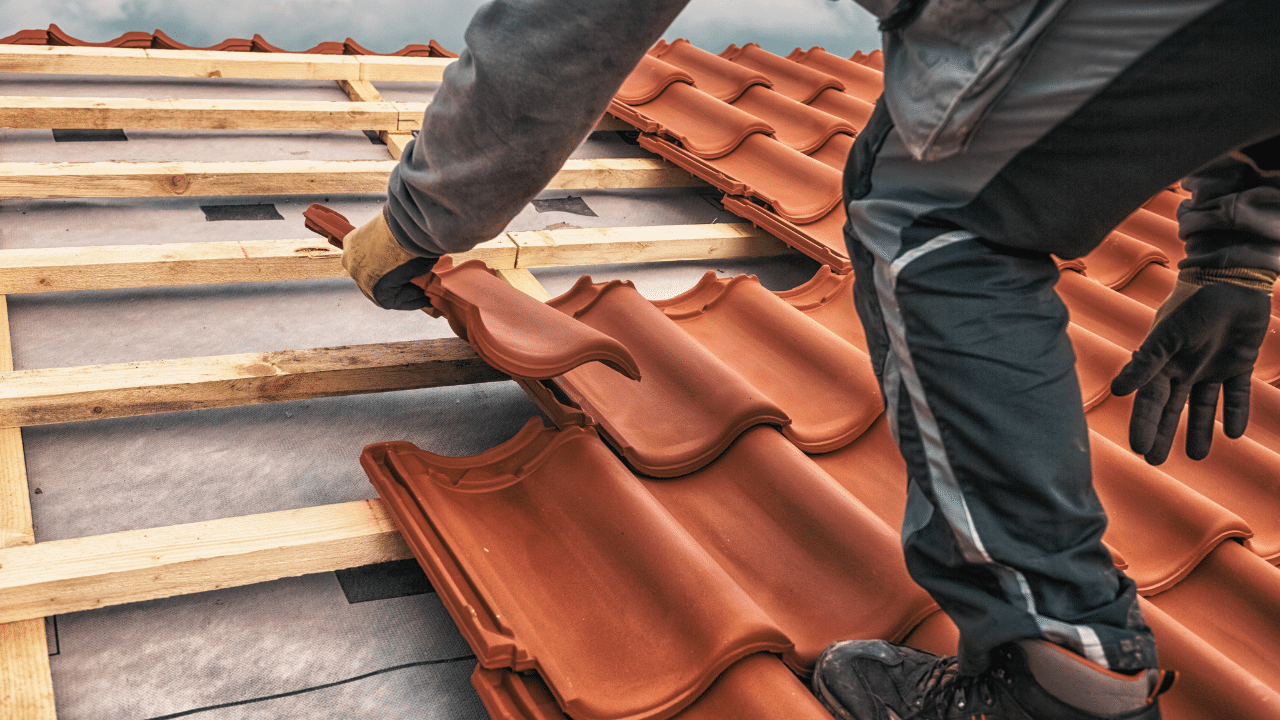
The archetypal roof tile, the clay tile is among the most popular choices for roofing worldwide. You can expect these tiles to set you back around $2,000 per square. Taking the average cost of a clay roof replacement to the ballpark of $27,000 and $60,000.
Life expectancy | Durability | Average Cost Per Square |
|---|---|---|
50 – 150 years | Very High | $2,000 |
Summary: Incredibly durable, classic tiles with a large range of design options available to suit all aesthetics. Clay tiles feature all the requirements any household will need, regardless of the weather.
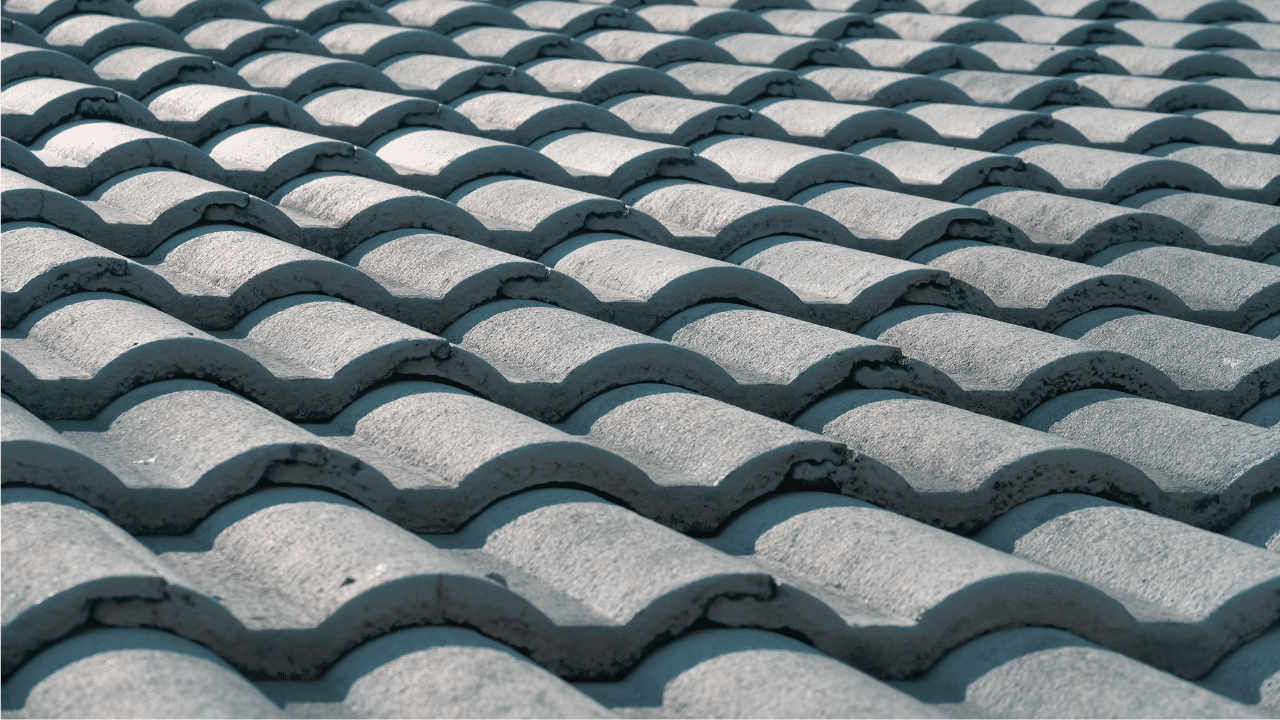
Heavier than clay tiles, concrete roof tiles also weigh in at $2,00 per square. However, due to their weight they are more likely to require more comprehensive structural reinforcement, meaning the average replacement price is slightly higher at between $30,000 and $40,000.
Life expectancy | Durability | Average Cost Per Square |
|---|---|---|
40 – 100 years | Very High | $2,000 |
Summary: Durable tiles with the option of varying profiles, allowing for a large variety of aesthetic choices. Clay tiles feature all the requirements any household will need, regardless of the weather.
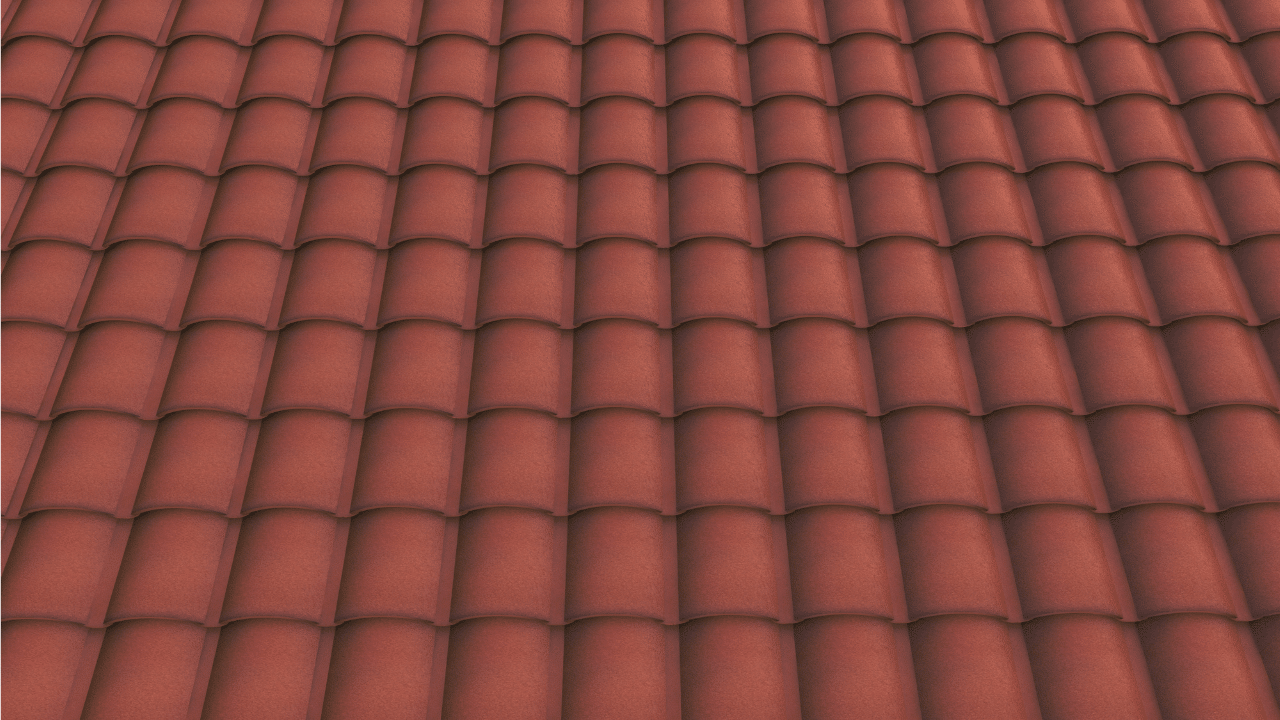
Seen as the more aesthetically desirable choice amongst roof tiles, Spanish tiles can be slightly more expensive at between $2,000 and $2,200 per square. Of course, the same roof reinforcement costs may also apply for these heavy tiles.
Life expectancy | Durability | Average Cost Per Square |
|---|---|---|
50 – 150 years | Very High | $2,100 |
Summary: Attractive, decorative tiles with incredibly high durability. Clay tiles feature all the requirements any household will need, regardless of the weather.
Offering up unique aesthetics alongside lightweight and highly durable, metal roofs scream modernity. Like tiled roofs, metal roofing comes in a variety of designs and materials, leading to a wide range in pricing. However, given that metal roofs are slightly less common than the previous two materials, they do come at a slight premium. The average price for a new metal roof is $15,000, with prices ranging between $8,400 to $27,500, of course depending on the specific size, slope, and materials. This boils down to the average price per square being between $400 to $1000.
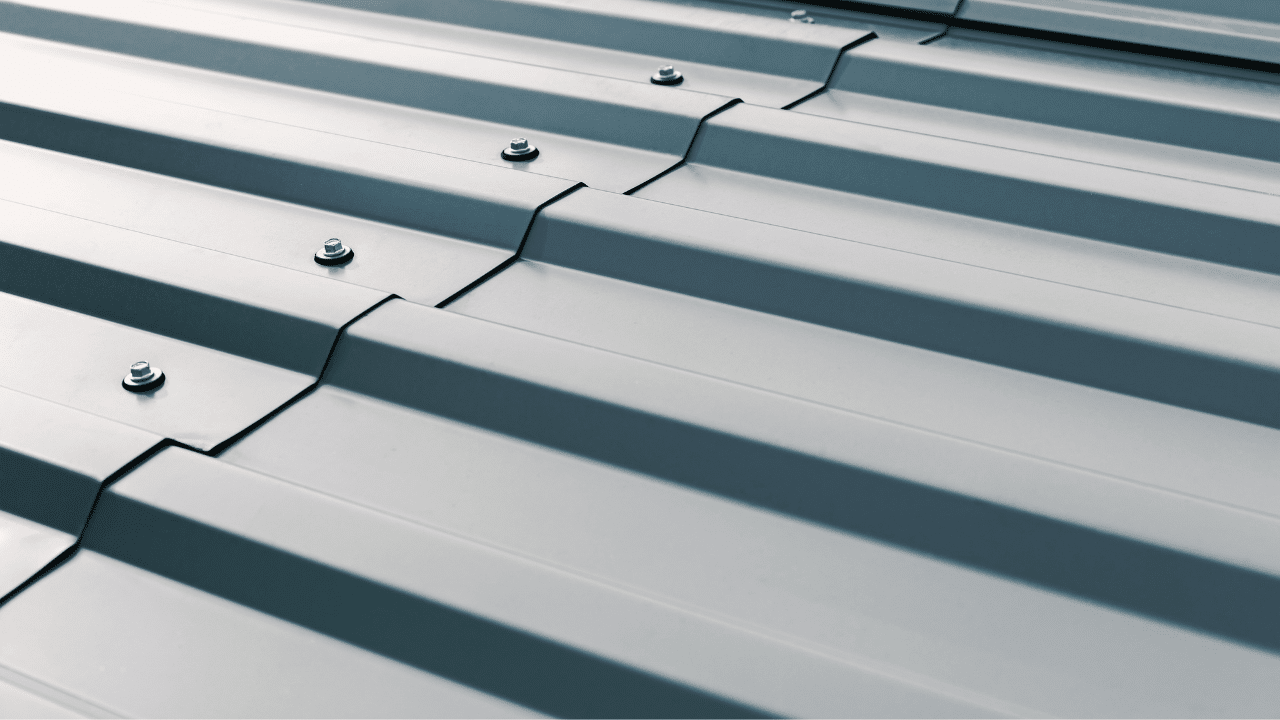
One of the most cost-effective metal roofing options, which retains incredible durability and elegance, is zinc roofing—which can be found under a plethora of licensed names. Weighing in at between $600 and $1,100 per square, it is an option which will be attractive to many.
Zinc roofs are often referred to as “self-healing” after undergoing their natural patination. It is worth noting, however, that during this process the roofing does change color slightly, meaning that if you are installing a new zinc roof you can expect some color change.
Life expectancy | Durability | Average Cost Per Square |
|---|---|---|
50 – 80 years | High (post-patination) | $850 |
Summary: This non-corrosive style of roof will keep its post-patinated color for its entire lifetime, while remaining incredibly resilient and durable. Furthermore, Zinc is known for taking less energy to produce than other types of metal roofing meaning it has a slightly lower environmental impact.
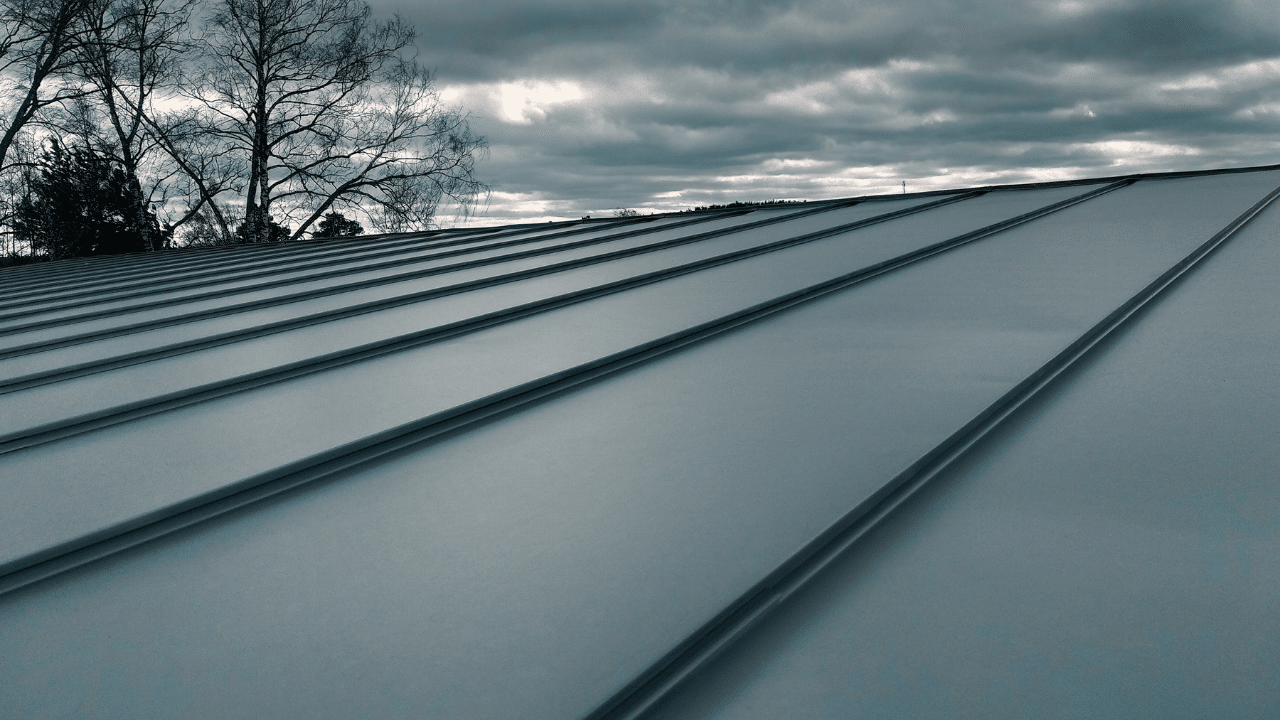
While roofs were once made purely of tin, nowadays tin roofs are in fact Terne—steel coated in tin. This long-lasting, durable roofing material is a great option for many. While the material comes with a sheen from the mill, they will patinate over time, transitioning the shine to a soft, matte appearance.
In most settings this process will happen relatively quickly. Given that Terne is fully recyclable, and is often made from recycled steel, it is another great option for those looking to reduce their environmental impact.
Life expectancy | Durability | Average Cost Per Square |
|---|---|---|
50 – 80 years | High | $1,100 |
Summary: Sharing many characteristics with zinc roofing, tin roofs can come in a variety of attractive colors to suit any architectural build.
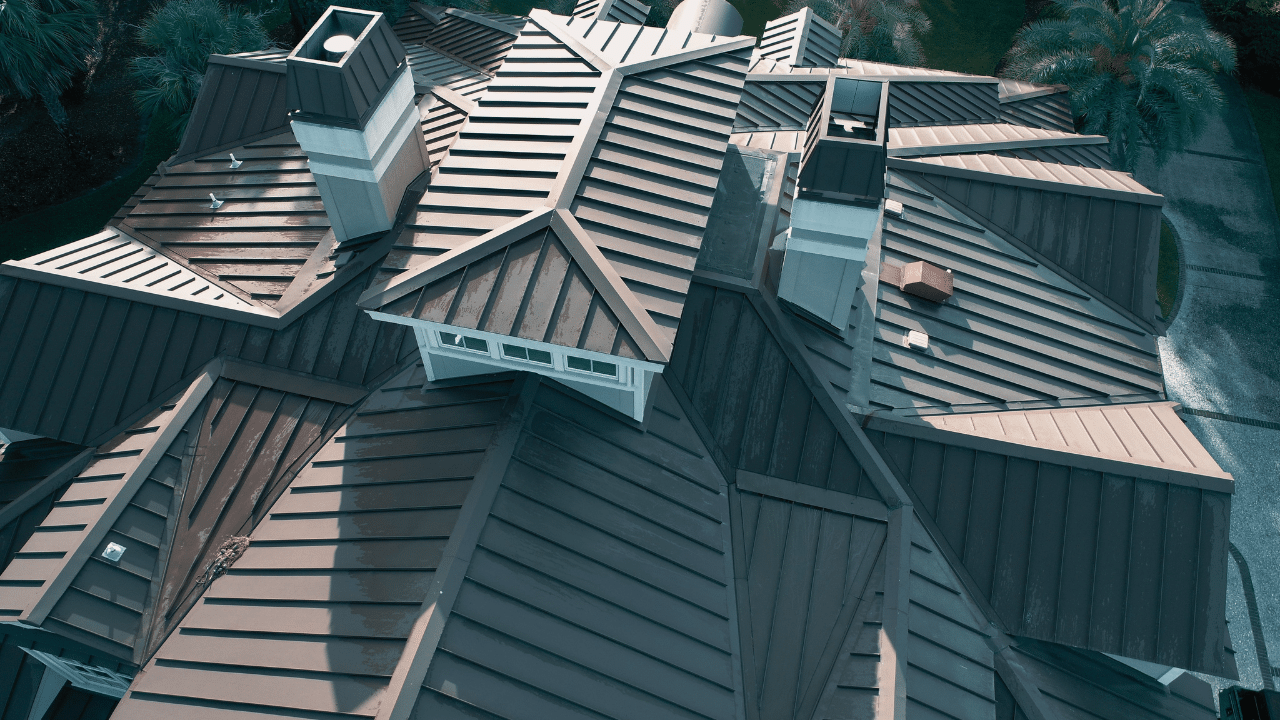
Balancing stability and performance with one of the simplest installation processes of the bunch, steel standing seam roofing offers many of the benefits of steel roofing at a fraction of the cost. Averaging $600-$800 per square, this material can see a whole job completed between $13,000 and $26,000.
The standing seam system employed by this technique makes installation a (relative) breeze. While the material itself provides strong protection against corrosion and weathering, minimizing the maintenance needs. What’s more, standing seam systems can be found for multiple different types of metal: from zinc and aluminum to copper.
Life expectancy | Durability | Average Cost Per Square |
|---|---|---|
40 – 60 years | High | $700 |
Summary: Good performance, robust and aesthetically pleasing paired with a simple installation procedure and high recyclability make steel standing beam a very attractive option for many.
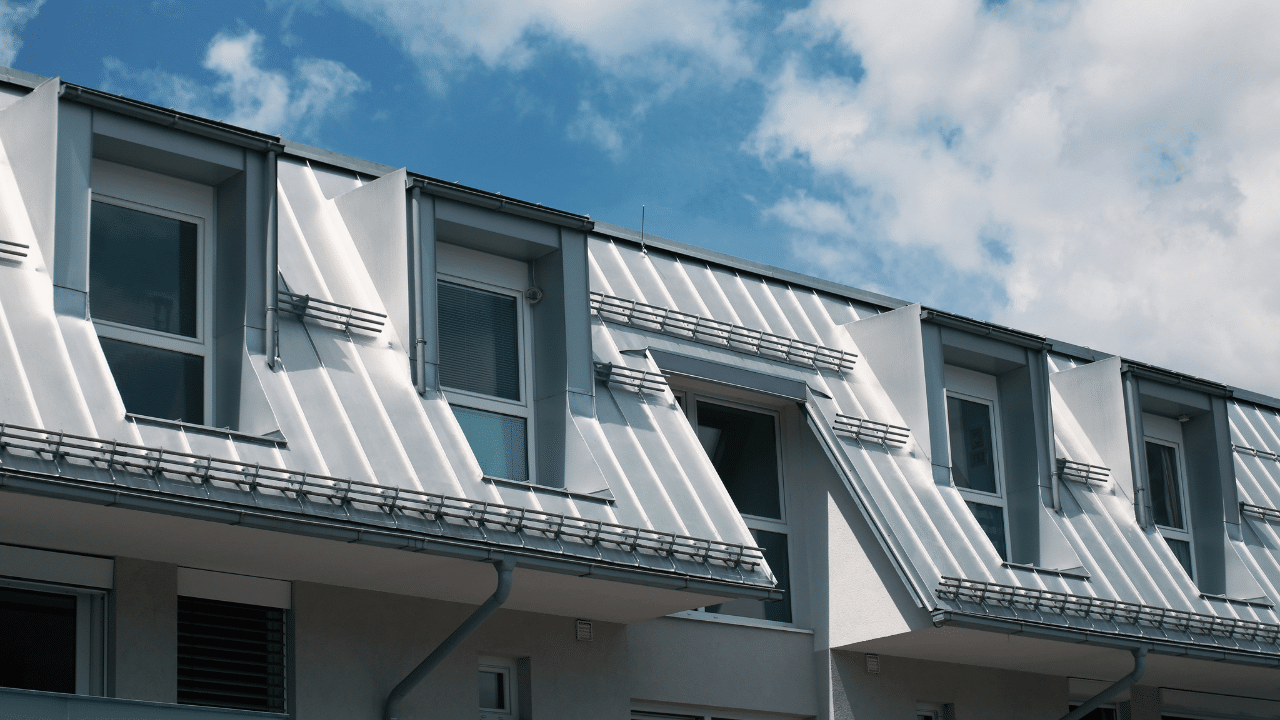
While most of us associate stainless steel with cutlery, stainless steel roofing has become a design choice for many looking to achieve a modern look while simultaneously securing top-class roofing. Being an incredibly high-grade material, when installed correctly, stainless steel roofing is incredibly low maintenance.
And, as with most metal solutions here, the roofing has a high recyclability, allowing you to rest assured you’re not contributing to the world’s waste problems. As with the standing seam style, this form of metal paneling can also be completed with various other metals, such as aluminum. Stainless steel roofing will cost in the ballpark of $850 - $1,400 per square, depending on your specifications.
Life expectancy | Durability | Average Cost Per Square |
|---|---|---|
40 – 60 years | High | $1,125 |
Summary: Iconic, modern steel look with incredibly high durability and resistance to corrosion. This allows stainless steel roofs to be very low maintenance.

Known for being one of the most expensive roofing solutions, Copper roofs are prized by many for their aesthetic patination alongside their initially glorious shine. But what onlookers don’t immediately appreciate is how durable and long-lasting such a material is.
You can expect to dish out $2,000 to $2,600 per square on a copper roof. Thus, a full residential roof is likely to set you back between $28,000 to $48,000. But since its life expectancy is up to 150 years, such an investment may well be worth it for a long-term family establishment. Like other metals, copper is good at reflecting heat away from the roof, giving you more control over the way you heat the interior of your home and, in many cases, reducing associated energy costs. Copper is also an incredibly lightweight metal, especially when compared to heavy concrete tiles, meaning that transport, installation, and support are, generally, easier than when using other materials. Furthermore, thanks to its flexible nature, copper makes an excellent choice for curved or irregular shaped roofs, as it is comparatively easy to mold to shape.
Life expectancy | Durability | Average Cost Per Square |
|---|---|---|
90 – 150 years | Very high | $2,300 |
Summary: Iconic copper color with aesthetic patination over time. Copper is also highly malleable, lightweight, and incredibly durable making it one of the best materials for roofing, albeit also one of the most expensive.
It is hard to ignore that slate roofing is another heavy hitter when it comes to cost. However, thanks to its recognizably attractive appearance, longevity and incredible durability, it can make a worthwhile investment for those who plan to keep a home for many years to come. The average cost of slate roofing is $1,900 per square, meaning most homeowners will spend between $19,000 and $58,000 on their roofs, depending on their size and the specific materials. Moreover, given the weight of these tiles your roof may need securing in preparation for these tiles. While this may sound like a whole lot, slate roofing has been seen to last up to 200 years when well maintained, meaning it can be a true investment that will last generations.
Life expectancy | Durability | Average Cost Per Square |
|---|---|---|
70 – 200 years | Very high | $1,900 |
Summary: Recognizably refined appearance, paired with incredible durability and longevity make slate tiles one of the most desirable roofing solutions out there.
Seen as an environmentally friendly, economical solution, wood shake roof is available in a range of thicknesses which provide differing amounts of insulation and protective performance. Commonly made of cedar, spruce or treated pine, this style of roofing is available in a variety of natural shades to add a feeling of earthliness to the roof of your house. Weighing in at around $1,000 per square, this option sits firmly in the middle of the market, making it an attractive option for its natural longevity and ecological values. It is also worth noting that additional treatments may be required to ensure that the wood shake roof remains above a necessary class C fire rating. Such treatments average around $1 per square foot. That means one could expect to pay between $16,000 and $22,000 for a wood shake roof.
Life expectancy | Durability | Average Cost Per Square |
|---|---|---|
30 – 50 years | Medium-high | $1,000 |
Summary: Wood shake roofing provides a natural alternative to manufactured materials. While it is not incredibly common (yet), it has a good life expectancy to cost ratio, making it an attractive option for modern individuals.
Solar panels sound expensive, so solar tiles are sure to hold the same stigma. But let’s think it through before we take the numbers at face value, as they also save you a lot in the long run. Solar roofing comes in at between $2,800 and $6,000 per square foot. This sees the average roof landing on a price of $65,000 to $90,000 for the tiles. These tiles must then be supplemented by several Powerall batteries to store the energy they harvest, which can come up to an additional $20,000. Furthermore, given that solar roofs are specialist, they will require specific teams to facilitate installation. But before this turns you off solar roofing, consider that over thirty years solar tiles will generate, on average, $60,000 worth of free electricity for your home. Not only this, but the government provides tax credits to help with installation costs. These tax credits can reduce overall installation costs by up to 30%. Thus, if we take all the key factors into account, you may find your solar roofing cost only approximately $20,000 over the course of 30 years. With each additional year reducing that more and more, until your roof in fact nets you money! Beyond financial elements, solar ties offer a way of harvesting the sun’s energy while keeping aesthetic congruity, offering up a handful of different designs.
Life expectancy | Durability | Average Cost Per Square |
|---|---|---|
25 – 60 years | High | $4,400 |
Summary: These solar tiles offer up a money-saving option for those with the funds to pay up front. They also provide strong aesthetic and durability, securing your house for many decades to come.
Flat roofs provide unique challenges which cannot be tackled with the same materials. As such you will find unique materials being used for flat roofs. Furthermore, flat roofs will generally have lower lifespans than sloped roofs due to the materials involved. Let’s run down a few of the key options:

Polyvinyl chloride is a very common material and is a very cost-effective solution for flat roofs. Installed in 6- to 18-inch-wide membranes, PVC roofing is places atop an installation board and fastened to become water-tight. You can get different thicknesses for different purposes. However, of course, PVC is not an eco-friendly option. PVC roofing will cost around $90 to $150 per square.
Life expectancy | Durability | Average Cost Per Square |
|---|---|---|
60mm, 20 – 35 years. 80mm, 25 – 40 years | Medium | $120 |
Summary: PVC roofing is a relatively cost-effective solution for flat roofs, providing good longevity with a variety of options to suit your needs.

Rubber EPDM roofing is a conformable, impermeable, and good insulator, making it a great roofing material. Thanks to its natural elasticity, it also provides a good amount of cushioning and flexibility, which can be necessary in certain builds. It is available in varying thicknesses. For the material you can expect to pay around $1,000 per square for a 45mm membrane and $1,250 for a 60mm membrane.
Life expectancy | Durability | Average Cost Per Square |
|---|---|---|
45mm, 15 – 30 years. 60mm 20 – 35 years. 90mm, 25 – 40 years | Medium-high, thanks to its flexibility | $1,125 |
Summary: This flexible, rubber material makes a great roofing material for those in a mid-range budget.
The uniquely named built-up roof style is created by placing multiple layers of sheet ply and binding them together with melted asphalt. It is common for the top layer material to be lighter than the rest to reflect light, while also serving aesthetic purposes. This flat-roof solution is among the most affordable, running between $65 and $110 per square. However, its lack of ecological responsibility and short lifespan are reflected in the price.
Life expectancy | Durability | Average Cost Per Square |
|---|---|---|
3–ply, 15 – 20 years. 5–ply, 30 – 40 years | Medium-low | $82.50 |
Summary: This is a cost-effective solution which balances longevity with price.

Spray-on roofing most commonly sees a polyurethane foam (SPF) applied evenly across a flat roof surface. This makes the surface water-resistance and somewhat durable. This is by far the most cost-effective solution for flat roofs, coming in at between $40 and $80 per square. More durable silicone sprays are also available for slightly more, at around $110 per square.
Furthermore, the ease of installation can also save you a notable amount of money. That said, SPF requires specific weather conditions to be sprayed on, so in an emergency you may not be able to apply it. Similarly, SPF requires more regular maintenance as cracks, gouges or punctures can lead to leaks.
Life expectancy | Durability | Average Cost Per Square |
|---|---|---|
20 – 30 years | Medium-low | SPF, $60. Silicone, $110 |
Summary: This low-cost solution is attractive for many but requires specific application and maintenance conditions which can lead to more work down the road.
Roofing Process
With some of your materials of choice in mind, you’re likely rearing to know how much each roof will cost for you, specifically. While this is, of course, hard to say the best way to fully understand the forecasted costs is by taking a bird’s eye view of the entire process timeline, as that reveals exactly where all the costs will be incurred.
As such, let us briefly run down the process of replacing a roof, from start to finish.
As with any projects, roof replacement comes with planning. Namely, we begin asking the question “how much work is there to be done?” Assessing the project comes in two distinct parts. First, you will want to know the exact size of your roof so that you can obtain material and labor quotes for your specific build.
Second, you will need to assess the integrity of your roof’s structure. This stage both ensures that your structure will hold its integrity for the longevity of your new roofing while also ensuring that the structure will be able to take any additional load brought about by the new roofing materials .Given this second step requires precision and knowhow, chances are you will want to call in a trained roofing assessor/consultant. Such consultations often cost around $250-$300. But with that money spent, you can have true peace of mind.
Whether you require a permit or not will depend solely on your jurisdiction’s local laws. Thus, it is integral to do your own research regarding whether re-roofing your home requires a permit. If you hired an assessor for the previous step, they are the perfect person to ask for advice.
Small repair projects tend not to require permits while larger-scale projects (like re-roofing) often do. If you require a permit, these can add around $500 to the bill.
If your re-roofing is to be completed by a company, now is the time to gather your quotes and settle on an option which feels right for you. Here you will undoubtedly be scouring the market for a good deal, but it’s worth remembering that quality and longevity can sometimes come at a premium.
And if you want your roofing to last its lifespan, you are going to want to ensure you’re getting experienced roofers putting it up.
With necessary measurements and permits acquired, you are ready to go ahead with the more exciting part of the process. Selecting and ordering materials may well be a process covered by your roofing contractor, but whether they are taking care of it under your specifications, or you are ordering the materials yourself there are a few things to look out for.
Firstly, you want to weigh up cost against longevity, ensuring that you are selecting a roofing material which is going to give you good bang for your buck—even if that means dishing out a little more cash today. Second, you need to ensure that your structure is going to be able to support the desired roofing materials. Your roofing consultant will likely have given you an approximation for a maximum load and/or a suggestion for the types of roofing your structure is able to support. Whether you stick to these confinements or opt to bolster your roof’s supports is up to you, but either way you must ensure the roofing you choose will be well supported.
If you hired a roofing company, this is the stage where you can sit back and watch your roofing project begin to take shape. This starts by removing all the old roofing material, which may well involve additional costs related to waste material removal or recycling.
Depending on your structure’s shape and size, you may also need to install scaffolding to facilitate the work. Never try to place new shingles on old ones, as they will not lay flat and will quickly fall out of position.
With the old roof removed, you now get a much better view of your roof supports, laying bare any imperfections which were previously invisible. This means that this stage may take a detour if any major damages need repairing.
With luck, the roof will be as expected, allowing you to either bolster its supports (if necessary) or simply move swiftly on. But before the new roofing itself is installed, the roofers will install insulation (if necessary).
Now is the moment where the big changes happen. Depending on the material you have chosen, this step of the process is likely to differ slightly. For materials like asphalt shingles additional roofing layers, required to assist in the temperature regulation and waterproofing of the building, must be installed before the shingles themselves.
This process often runs in this order: decking, ice/water barrier, flashing, underlayment, starter strip, shingles, and finally, ridge caps. If you have selected tiles or metal roofing this part of the process will look slightly different, however one thing is for certain: by the end of it you will have a fresh roof over your head!
Before celebrating the completion of the project, the roofing team will need to clean up any debris around your home and remove all the old or unused roofing materials from site.
Alongside this, the roof should be signed off by a roofing expert who ensures that the correct levels of quality have been achieved, giving you peace of mind that the roofing should last its given lifespan.
Calculating Your Roofing Cost
With a clear understanding of the process, it becomes clear where the key expenditures are going to be. These key expenditures will be found across the varying stages as:
Consultation costs
Costs to obtain permits
Material costs
Structural reinforcement/rebuilding costs
Labor costs
Material disposal costs
That said, the process can come with additional costs which are worth considering depending ono your circumstance. These can include:
Skip hire
Scaffolding costs
Rainwater goods
Structural repairs
Soffits/fascias
Insulation
Underlayment removal or replacement
The best way to get a grapple on costs is to contact a roofing consultant, who will not only be able to check the integrity of your current roof but will also be able to inform you on some rough cost projections for your specific project.
Factors Affecting Roof Replacement Cost
Now that we have the key costs identified, it is worth running down how we can keep those within your given budget. Let us take a closer look at all the key expenditures and provide some top tips which can help ensure you don’t go over budget.
Choosing and purchasing materials is, of course, one of the largest expenditures you must consider. Selecting the ideal material is often a careful balancing act between achieving your desired aesthetic, ensuring longevity of the roof and managing your budget. Fortunately, the modern roofing industry is chock-full of tons of different options for you to choose from.
You can find a rough breakdown of all major material types in the materials section of this article, above. As a hard-and-fast rule, if you’re looking to keep costs to a minimum you will be looking at asphalt shingles. However, it is well known that those shingles have among the lowest lifespans for residential roofs. Thus, if you have the funds to pay a fraction more, you are likely better off going with a mid-range option which better balances cost and longevity.
Of course, your budget might mean you have to put your dreams of a copper roof to one side, but it does not mean you can’t get a roof which protects your home for decades while also looking great.
Size is a factor you have little control over, since you’re unlikely to be changing the footprint of your house. That said, there are features such as soffits and fascias which can incur extra costs. While these can make for aesthetically pleasing features, those looking to keep costs down might want to keep such features to a minimum.
Furthermore, it is worth noting that roof costs will also vary depending on the slope of your roof, with certain angles only tolerating types of materials. Again, such slopes will be easily identified by a roofing consultant who would be able to provide steadfast information on your project.
Chances are if your roof is currently in incredibly poor condition, it will be hiding some structural issues under its surface. Similarly, if you are looking to use heavy roofing materials, such as tile, you may well need to reinforce your current roof structure to facilitate the additional weight. These two instances would mean being prepared to put some money towards repairing those issues before you can put up your new roof.
However, there are two ways to help keep these costs to a minimum: First, it is vital to hire a roofing consultant early on to help forecast repair/restructuring costs. This will help to build a solid roadmap. Second, ensuring that such restructuring is done before applying any new roofing solution is incredibly important to keep additional, unnecessary labor costs down. This also ensures that you will not discover structural weaknesses through it collapsing—something which would be incredibly costly indeed.
Another factor out of your control, it is worth keeping in mind that the location of your home may well affect some costs: from permits to material delivery or additional travel costs.
To help identify and minimize locational costs, it is worth working with local professionals as they will not only be familiar with local laws, which may require you to purchase a permit, but they will be familiar with working locally, keeping many costs down.
The flatter and lower the roof, the lower the need for scaffolding. Again, you are certainly not able to alter the height of your roof simply to keep costs down, but it is necessary to foresee when scaffolding may become an additional cost. If scaffolding is required, it may be possible to procure it through your roofing contractor, which may help to keep costs down.
When it comes to labor, prices should always be measured through value not cost alone. This means appreciating that skilled, trusted contractors are likely to charge more than less experienced, independent businesses. While more expensive won’t always mean better quality, you must ensure you are getting good value for your money, as there’s nothing worse than needing to re-do a job as it wasn’t completed to a high enough level. Labor costs can also be kept own by locating nearby roofing contractors who work in the lower area, as they won’t need to take long trips to your location.
Finally, when it comes to labor costs it is essential to know what is included (and what isn’t) when you are signing a contract. A few things to look out for are tool hire, supplies, clean-up, scaffolding and material disposal. The more of these you can lump into one payment, the better.
Ensuring you get the correct permits is essential for any project, as without a permit the local government may have the rights to retroactively veto your build.
That said, not all local regulators require roof replacement projects to acquire permits. Thus, you should commit some time to doing your own research, or consulting a local professional, to understand whether your project needs a permit or not. After all, nobody wants to pay for something they don’t need.
Disposing of old roofing materials can be costly, whether it be through hiring a skip or disposing of them yourself. Discussing with your contract about whether they include disposal and clean-up costs can help to keep the costs down or, at the very least, inform you about whether you will need to cover these costs down the line.
Choosing the Right Roof for your Needs and Budget
Everything considered, knowing what roof replacement option is right for you can be tough. While low price tags may draw you in at first, it quickly becomes clear that longevity is one of the most important factors when considering a roof replacement. Thus, you a good metric of value is to calculate the projected cost of each material per square per year. To do this you can simply divide the cost per square by the projected lifespan of the material.
Using this method, the pricing guides shift:
Material | (Average) Price per Square | Lifespan | Price Per Square Per Year of use (Min Lifespan) |
|---|---|---|---|
Asphalt | $475 | 12-25 years | $39.60 |
Clay Tile | $2,000 | 50-150 years | $40 |
Steel Standing Seam | $700 | 40-60 years | $17.50 |
Copper | $2,300 | 90-150 years | $25.56 |
Slate | $1,900 | 70-200 years | $27.14 |
As we can see from these simple calculations, the value from each roof greatly differs from the price per square. Of course, this does not necessarily mean you should spend your life savings on a copper roof. But what it does mean is that it is worth considering the additional value a sturdy roof may bring to your property through longevity.
Furthermore, as we have charted, the overall costs for roof replacement extend far beyond the materials themselves. Meaning it is vital to chart out all the project’s projected expenditure before settling on any given material. This will incorporate all costs from consultation and permits through labor to clean-up and material disposal. Thus, when selecting the right roof for you, today, you should be balancing immediate cost with the overall annual cost, as if you plan to stay at a property for the foreseeable future, you could certainly save a lot of money in the long run.
Consumer Consideration Guide
Before getting your roof replacement project underway, and certainly before finalizing your deal with the contractor, there are a number of factors to consider to ensure you have all projected costs accounted for.
Selecting the right material for your roof, accounting for its value through longevity
Obtaining necessary permits from your local regulators
Understanding local rules and regulation, to ensure your final roof will be approved
Acquiring trustworthy labor for fair value, by surveying the options both local and regional
Accounting for any additional costs, specific to your build. Whether that be structural repairs, material disposal or scaffolding requirements.
Obtaining professional consultation regarding the condition of your current roof’s structure
Understanding exactly what is, and is not, included within the contractor’s contract
Acknowledging the project length and potential disruption that will cause to you and/or the home’s occupants
One you have considered all these key features and have tallied up all the projected costs (both included and excluded from the contract), you are ready to go ahead and start your roof replacement project!
Roof Replacement: Frequently Asked Questions (FAQs)
What is a roofing square?
A roofing square equates to approximately 10x10 square feet or 100 square meters.
How often does a roof need replacing?
Different materials will have different lifespans. If your roof has significantly deteriorated, you are experiencing any roof-related leaks or you have any structural issues you should consider contacting a roof consultant to determine whether your roof needs replacing.
How long does a roof replacement take?
Between one and five days, depending on the size and complexity of the project. Weather, time of year, accessibility and structural damage can all cause roof replacement to take longer.
Can you replace half a roof?
Yes, however many experts agree this is a bad idea, as it can lead to issues further down the line.
Do gutters need to be removed during roof replacement?
No. Even if gutters are being replaced at the same time, they should be replaced after the roof. Contractors should protect gutters during the roofing process.
Does insurance cover roof replacements?
Insurance can cover roof replacement, but only in the case of sudden accidents or acts of nature. Check your specific insurance plan for certainty. Insurance generally doesn’t cover normal wear.
Is roof replacement tax deductible?
No, the cost of a new roof is not tax deductible.
When does roof plywood need replacing?
Unless you have water damage or 3/8 plywood, there is no clear deadline for when plywood needs replacing. It simply depends on its strength and condition.
Will a new roof add value to my property?
Yes. It can improve selling price, reduce selling time, and increase appeal to buyers. Thus, you can recoup some costs even if you are selling the home.
Can I replace my roof myself?
Unless you are a trained professional it is not advised to replace your roof, as you can cause severe damage to your roof and/or yourself.
Do I need permission to change my roof?
This depends on your jurisdiction and is subject to local laws. Check with your local building regulator, or a roofing consultant, for a clear answer.
